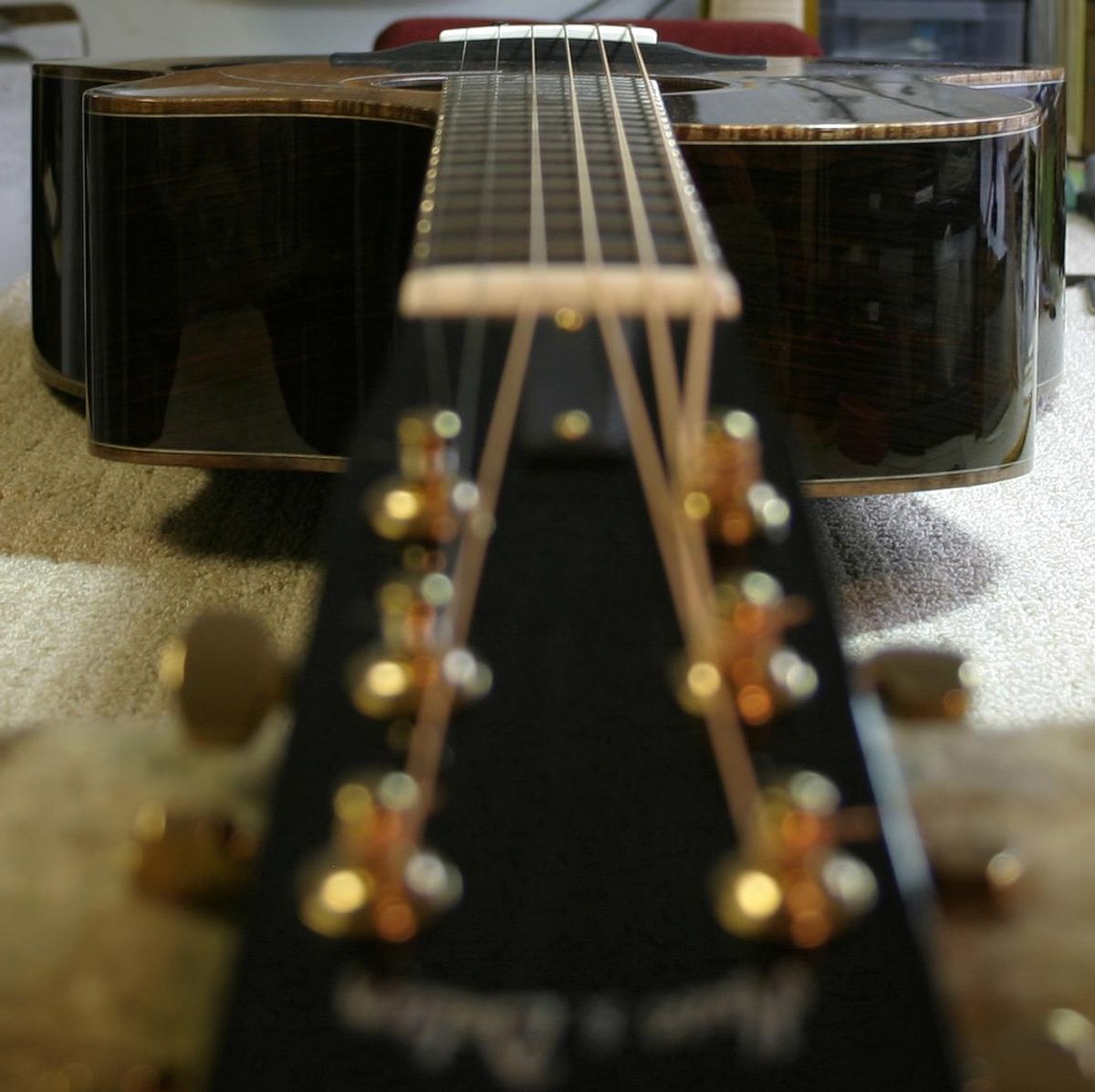
When you think about it, it's fascinating how much a fraction of an inch in scale-length difference can affect an acoustic guitar's tone.
String scale length certainly affects playability, but it also has a huge role in a guitar’s sound.
Much has been written about scale length and how it relates to playability, but it seems that less is said about how tone relates to scale. If you're considering having a custom guitar built, it would behoove you to spend some time with different scale lengths to determine which one is a good fit for you. It's an often-overlooked variable that can make all the difference timbrally. At Huss & Dalton, we offer three different scale lengths for our standard models, so for this month's column, I'll cover each and speak a bit about both playability and tonal differences.
25.4"
Most builders offer something featuring this length and will often refer to it as “long scale." It's usually found on guitars with necks that join the body at the 14th fret, such as dreadnoughts and OMs. Long scale is widely thought of as the scale of choice for both flatpickers and modern fingerstyle players. That's pretty remarkable, given these two camps rarely agree on much else.
Long-scale instruments generally provide greater sustain than those with a shorter scale and tend to be more balanced in nature. This particular scale length also lends itself to greater headroom in its tone. (By headroom, I'm referring to the point at which an acoustic guitar's tone starts to break up when played hard.) It's our most popular scale length, and I think that's due in part to flatpickers liking the headroom and fingerstyle players loving the endless sustain. The only downside to long scale is as the scale goes up, the string tension does as well. This is what makes longer-scale guitars a bit harder to play than their shorter-scale cousins.
24.9"
This is known in our shop as “short scale"—even though it's not the shortest scale we offer—and 24.9" tends to be the standard scale-length for 12-fret guitars, meaning those with necks that join the body at the 12th fret, rather than the 14th.
Triple-Oh Tip When referring to a 000 guitar with any builder or guitar store, always specify whether you are talking about a 12-fret 000 (this is what we at H&D call a 000) or a 14-fret OM body with a 24.9" scale, which has also historically been called a 000.
Occasionally, especially with OMs, square-shouldered guitars with 14 frets clear might feature a short scale (sometimes making the OM a 000 model). This scale length is also often paired with a round-shouldered body such as a 0 or 00. While some of this is just tradition, it is also rooted in the 12-fret sound being made more dynamic with the shorter-scale length.
Since scale length helps determine where the bridge will rest in relation to the placement of the “X" brace, scale length really can change a guitar's tone quite a bit. We find that using a short scale will most often make a guitar's tone softer and warmer. The shorter scale also makes the guitar feel easier to play due to less string tension (when compared to a long-scale instrument). The 24.9" scale does lessen the headroom aspect a bit, which won't work as well for folks who play hard with a flatpick or with metal fingerpicks.
24.75"
This scale length is often referred to as “Gibson" scale because Gibson used it quite a bit in the golden era of flattop guitars. It is our shortest scale, and I find that the guitars with this measurement have the most distinctive tone of the three scale lengths we offer. It tends to produce an almost nasally twang and a woodiness that the other lengths can't match. If you like the sound of the blues masters and archtop players of yesteryear, you will love this tone.
As touched on before, there are some headroom concessions here with a shorter scale, but the playability is like butter, and that magical old-world tone is hard to get with any other scale length. This may also make it the most specific of all lengths, so it won't be for everyone. I find that when I play one of our Crossroads models here at the shop—which features this scale length—I can conjure up the vibe I feel when I hear Norman Blake play and sing. Nobody will confuse my playing with Norman's, but it doesn't hurt to dream!

